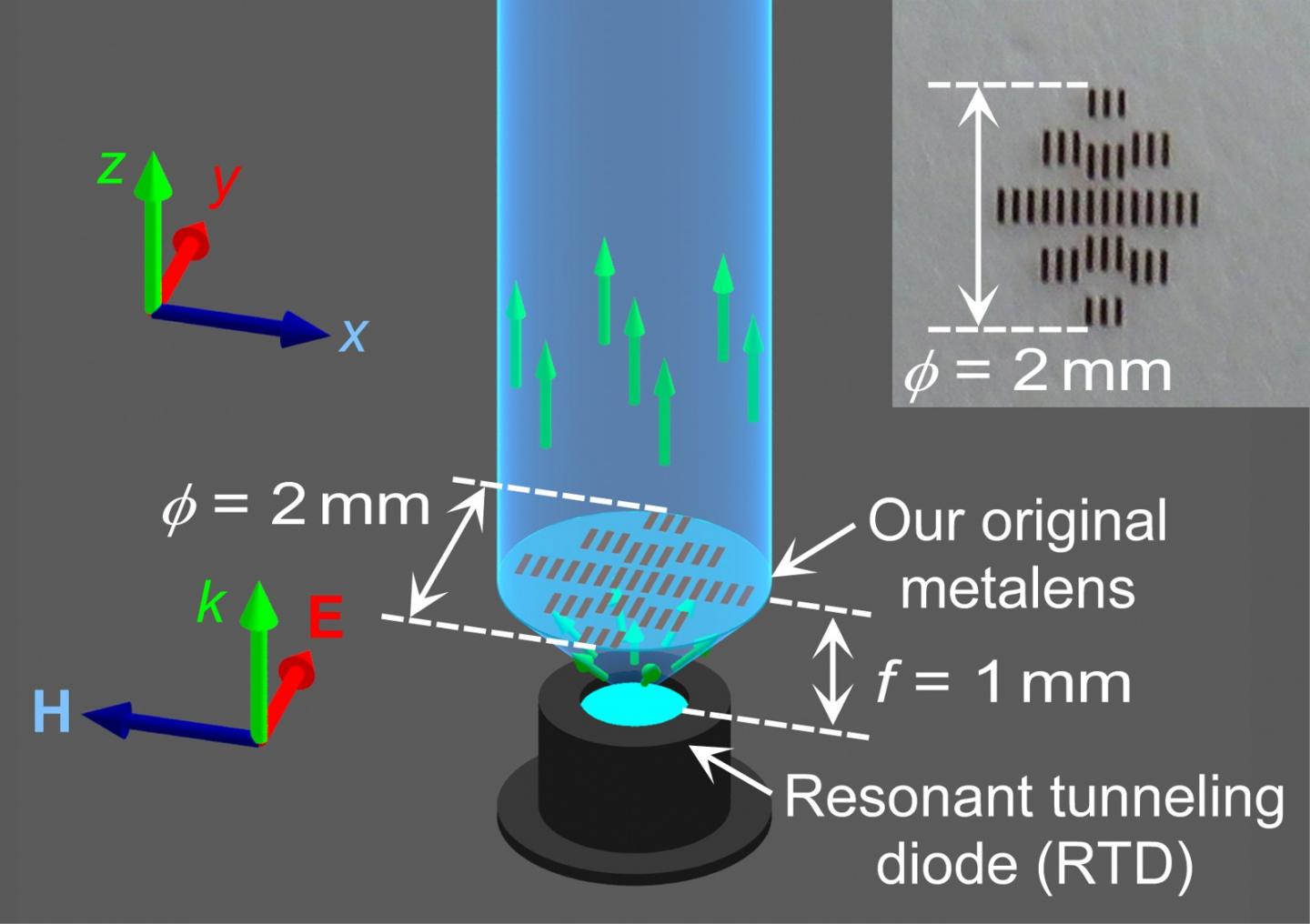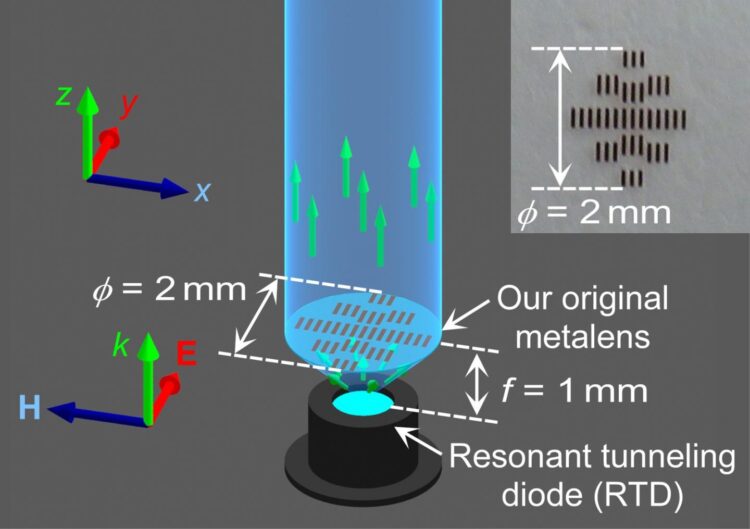
Credit: Takehito Suzuki/ TUAT
Screens may be larger on smartphones now, but nearly every other component is designed to be thinner, flatter and tinier than ever before. The engineering requires a shift from shapely, and bulky lenses to the development of miniaturized, two-dimensional metalenses. They might look better, but do they work better?
A team of Japan-based researchers says yes, thanks to a solution they published on July 7th in Applied Physics Express, a journal of the Japan Society of Applied Physics.
The researchers previously developed a low-reflection metasurface — an ultra-thin interface that can manipulate electromagnetic waves — specifically to control terahertz waves. These waves overlap millimeter waves and infrared waves, and, while they can transmit a significant amount of data, they easily attenuate in the atmosphere.
The technology may not be suitable for long-range wireless communications, but could improve short-range data exchanges, such as residential internet speeds, said paper author Takehito Suzuki, associate professor in the Institute of Engineering at Tokyo University of Agriculture and Technology. According to Suzuki, the researchers have taken a step toward such application developments by using their metasurface to craft the world’s “top” ultra-short metalens that collimates to align an optical system with a distance of only one millimeter. The metalens is capable of increasing transmitted power by three at the far field, where the signal strength typically weakens.
“Terahertz flat optics based on our originally developed low-reflection metasurface with a high-refractive index can offer attractive two-dimensional optical components for the manipulation of terahertz waves,” Suzuki said.
The challenge was whether the collimating lens, which converts approximately spherical-shaped terahertz waves to aligned terahertz waves, made with the metasurface, could be mounted closely to the electronics — called a resonant tunneling diode — that transmits terahertz waves at the right frequency and in the right direction. The minimal distance between the diode and the metalens is the necessary ingredient in current and future electronic devices, Suzuki said.
“We resolved this problem,” Suzuki said. “We integrated a fabricated collimating metalens made with our original metasurface with a resonant tunneling diode at a distance of one millimeter.” Measurements verify that the collimating metalens integrated with the resonant tunneling diode enhances the directivity to three times that of a single resonant tunneling diode.
The researchers tuned their device to 0.3 terahertz, a band at a higher frequency than the one used for 5G wireless communications. The manipulation of higher-frequency electromagnetic waves allows the upload and download of huge amounts of data in 6G wireless communications, according to Suzuki.
“The 0.3 terahertz band is a promising candidate for 6G offering advanced cyber-physical systems,” Suzuki said. “And our presented collimating metalens can be simply integrated with various terahertz continuous-wave sources to accelerate the growth of emerging terahertz industry such as 6G wireless communications.”
###
Suzuki is also affiliated with the Japan Science and Technology Agency. Other contributors include Kota Endo, Masashi Sekiya and Kento Sato, Department of Electrical and Electronics Engineering, Graduate School of Engineering, Tokyo University of Agriculture and Technology; and Jaeyoung Kim, ROHM Co.
For more information about the Suzuki laboratory, please visit http://web.
Original Paper:
Resonant tunneling diode integrated with metalens for high-directivity terahertz waves
Kota Endo, Masashi Sekiya, Jaeyoung Kim, Kento Sato, and Takehito Suzuki
Applied Physics Express 14, 072002 (2021)
https:/
Funding:
This research is supported by Grant-in-Aid for Scientific Research (C) (No. 18K04970) from the Japan Society for the Promotion of Science (JSPS), PRESTO from the Japan Science and Technology Agency (JST) (JPMJPR18I5), Inamori Foundation, Kato Foundation for Promotion of Science, Iketani Science and Technology Foundation, TEPCO Memorial Foundation, GMO Internet Foundation, and The Noguchi Institute.’
About Tokyo University of Agriculture and Technology (TUAT):
TUAT is a distinguished university in Japan dedicated to science and technology. TUAT focuses on agriculture and engineering that form the foundation of industry, and promotes education and research fields that incorporate them. Boasting a history of over 140 years since our founding in 1874, TUAT continues to boldly take on new challenges and steadily promote fields. With high ethics, TUAT fulfills social responsibility in the capacity of transmitting science and technology information towards the construction of a sustainable society where both human beings and nature can thrive in a symbiotic relationship. For more information, please visit http://www.
Contact:
Takehito Suzuki, Ph.D.
Associate Professor,
Institute of Engineering,
Tokyo University of Agriculture and Technology, Japan
E-mail : [email protected]
Media Contact
Yutaka Nibu, Ph.D.
[email protected]
Related Journal Article
http://dx.





